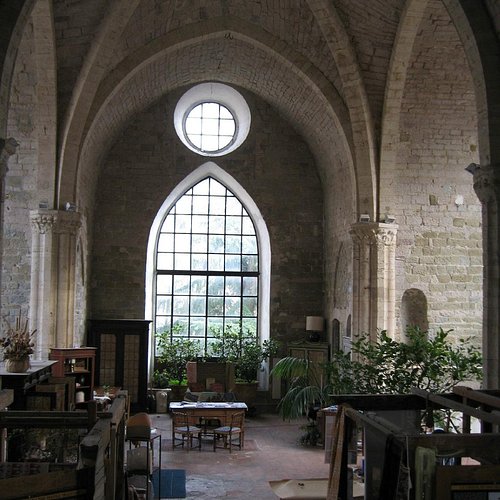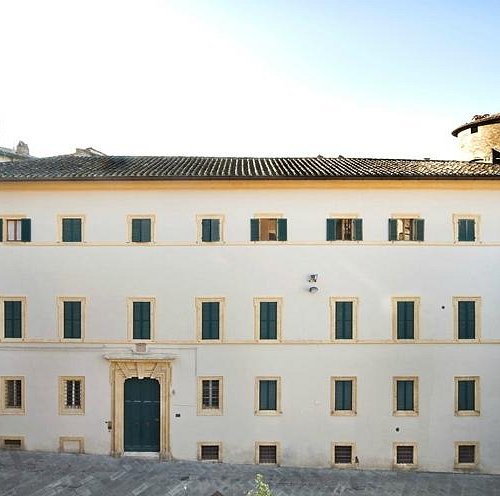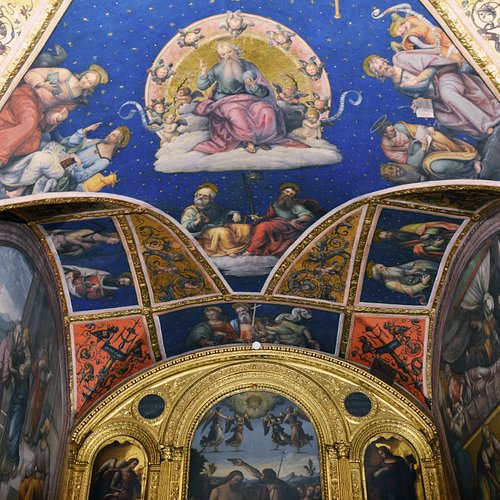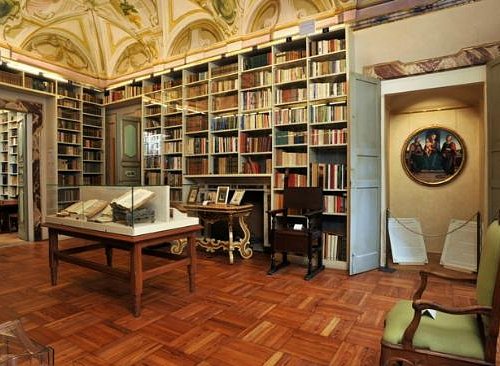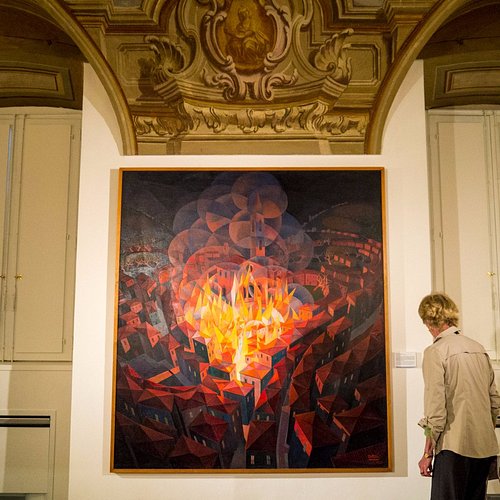The 10 Best Museums in Perugia, Umbria
This picturesque Umbrian city has a history that spans many eras. The city wall and arch are Etruscan; the sixth-century Sant'Angelo church was built atop a Roman temple; the town's cathedral is both Gothic and Renaissance. If you have a sweet tooth, visit the famous Perugina chocolate factory; if you have a full set of sweet teeth, visit during the Eurochocolate festival, held in October, when the entire town reportedly smells of chocolate.
Restaurants in Perugia
1. Museo-Laboratorio di Tessitura a Mano Giuditta Brozzetti
Overall Ratings
5.0 based on 344 reviews
Monday to Friday: 9:00 -13:00. Afternoons, Saturday and Sunday also available by appointment. The exclusive workshop is located in the fascinating, deconsecrated Romanesque church of San Francesco delle Donne.
2. Museo-Laboratorio di Vetrate Artistiche Moretti Caselli
Overall Ratings
5.0 based on 187 reviews
Museo Laboratorio Moretti Caselli making and restoration of stained glass windows and of works of artSince 1860, for five generations, a family of artists has been making painted and baked stained-glass windows in the historic centre of Perugia.The Moretti Caselli Studio is located in a fifteenth-century residence that once belonged to the Baglioni family.Visitors can plunge into history and the activity of the past by enjoying guided visits by appointment.
Reviewed By ChrisJaytravels
Excellent and interesting to see the history of the workshop see the works and then walk one block over and SEE some of restored glass in the church. Amazing and interesting!
3. Fondazione Marini Clarelli Santi - Casa Museo degli Oddi
Overall Ratings
5.0 based on 144 reviews
The Palazzo degli Oddi, then Clarelli Marini, today House Museum is located in the heart of the city of Perugia in the area where there were already in the medieval era homes of the family, in one of the five most important streets leading to the main square. The palace was built around the middle of the sixteenth century and was inhabited until the middle of nineteenh century. The last owner, the Marchioness Barbara Marini Clarelli, painter, restorer and expert in local history, for testamentary disposition wanted it to be set up a foundation that would combine his name with that of her beloved husband, the famous art historian Francesco Santi in such a way that the Palace could be made accessible and could become a place of study for the history of degli Oddi family, one of the oldest Italian nobility that significantly had a significant influence on the history of Perugia during the Middle Ages. Today the House Museum still bears historical furnishings.
4. Collegio del Cambio
Overall Ratings
4.5 based on 230 reviews
Perugia's Exchange Guild, the home of the region's money changers, dates from the thirteenth-century and boasts some of Italy's best preserved Renaissance frescoes painted by Perugino.
Reviewed By 58philipp - Herentals, Belgium
Impressive historical place. Excellent to have the old (very) coins on display. Beautifully decorated.
5. National Archaeological Museum of Umbria
Overall Ratings
4.5 based on 219 reviews
Reviewed By Brun066 - Florence, Italy
It's uncertain whether Perugia was among the twelve major cities being part of the Etruscan confederation of Central Italy. It's possible that this uncertainty persists because the development of Perugia as true Etruscan city (since the end of the 4th century BC) is later than that of the other confederate cities, being it originally a settlement by the Umbrian people. On the other hand the architectural testimonies of the Etruscan walls and gates are the most impressive ever, so Etruscan Perugia is undoubtedly a historical phenomenon worthy of the utmost attention. This importance of the Etruscan city is also visible from the Archaeological Museum, which has therefore earned the title of "National Archaeological Museum of Umbria", despite the fact that in Umbria region there are many important archaeological remains and finds. The Museum also receives prestige from being housed in the imposing former San Domenico convent, and from being characterized by the large cloister that is at its center. Here the Museum has been housed since 1948: the collections are displayed on the two floors of the building surrounding the cloister. A large number of cinerary urns are on display, embellished with sculptures that the local aristocracy commissioned to artists of often great value, and who were inspired by Greek myths. The myths are illustrated by captions in Italian and English, which allow the visitor to recall the fascinating stories of these ancient civilizations. In my opinion, at least three halls cannot be overlooked, they are the following. The room that houses the splendid bronze plates and figurines (including many plaques once covering some parade or war carts) found in 1812 in San Mariano (a hamlet of Corciano municipality), 13 Km from Perugia. The works, dating back to the 6th century BC, had already been partly plundered by local farmers, so many dozens of them are today in Munich; but in the Museum still the majority of the pieces (180) remains. Then the underground environment in which the urban tomb of the "Cai Cutu" family, discovered in 1983, never violated, and used since the 3rd until the 1st century BC, was reconstructed on a 1:1 scale. It shows fifty carved urns, placed in their original position. Finally, the room dedicated to a tomb plundered much more recently (2003) and recovered in 2013: the tomb (equally internal to present-day Perugia, used in the second and first centuries BC) belonging to the "Cacni" family. The twenty-two urns coming from the tomb are richly decorated, featuring sculptures of high artistic level. There are also other objects found in the tomb: weapons, armor, ceramics, etc. In essence, even if there were only these noteworthy halls (and certainly not so), they would do this a museum not to be missed.
6. Galleria Nazionale dell'Umbria
Overall Ratings
4.5 based on 825 reviews
Reviewed By juanmiguelk2018 - San Jose, Costa Rica
An art museum mainly about Medieval and Renaissance art (mainly religious) and some Baroque art. Has amazing art by Perugino and Piero della Francesca, most sees,even if focusing on the main artists will mean a short 1 and half hour visit. It is true is has few explanations, and fewer in english.The explanations are way too technical (I speak italian) Not for first timers, for avid museum goers.
7. House Museum Palazzo Sorbello
Overall Ratings
4.5 based on 207 reviews
In the old town centre of Perugia, near the Cathedral and Etruscan Well, an old palace dating to the 17th Century houses a valuable collection of paintings, porcelains, printed works, manuscripts and embroidered fabrics. The stately mansion of the Marchesi Bourbon di Sorbello welcomes visitors in rooms with vaulted ceilings, elegant 18th Century furnishings and chandeliers, as well as an evocative vista over Perugia and the Valley of Assisi. OPENING HOURS IN THE AFTERNOON, BESIDES IN THE MORNING, DURING THE SPRING/SUMMER SEASON AND IN THE MAIN HOLIDAYS OF THE YEAR
8. Museo del Capitolo della Cattedrale di San Lorenzo
Overall Ratings
4.5 based on 106 reviews
Founded in 1923 and located in the cloister of St. Lorenzo Cathedral, the museum assembles various types of artworks. Most interesting are: the painting by Luca Signorelli, by Agostino di Duccio, wooden sculptures, a rare display of illuminated manuscripts and two sections dedicated to ecclesiastic furnishings and liturgical paraments.

